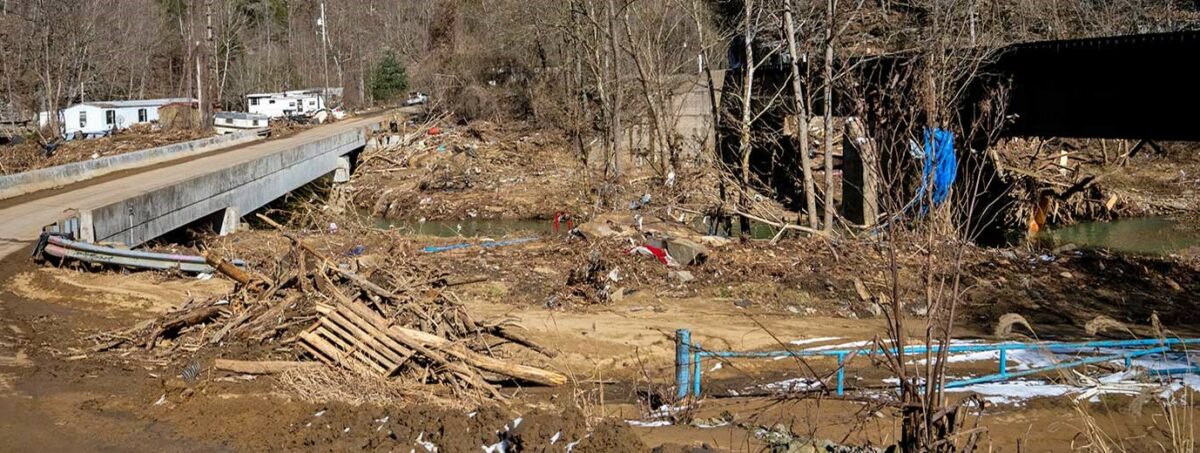
White House Order Shifts Emergency Response Role from FEMA to States

A March 18 Trump administration executive order directs that the Federal Emergency Management Agency shift more responsibility for U.S. disaster emergency response and rebuilding to states and localities. It follows layoffs of more than 200 FEMA employees and a Jan. 24 order that establishes a task force to review agency efficiency in addressing disasters.
Critics voice strong concern that the order would make it harder for non-federal entities to respond to weather disasters. cyberterrorism and other emergencies, but others contend it does not abolish FEMA—what Donald Trump had threatened as a presidential candidate—just offer a plan to overhaul it.
The order calls for state and local governments to have a “more significant role in national resilience and preparedness” by making more infrastructure investments while also requiring, over the next few months, development of a “national resilience strategy” and review of federal policies on critical infrastructure, disaster readiness and risk assessment.
Chad Berginnis, executive director of the Association of State Floodplain Managers, says the group agrees with much of the policy, at least in theory. “The devil is in the details,” he told ENR. “I think we can increase capability at the local and state level through either incentives … or penalties but that will never negate a need for a larger [federal] coordination level for these bigger events.”
FEMA typically gets involved in disaster response when state and local resources are overwhelmed and a national emergency declaration is made. But a 2023 Government Accountability Office report concluded that FEMA is already understaffed—by about 35%, and the agency often has brought in personnel from other agencies to support response efforts.
The two executive orders, in addition to staff layoffs, could hobble the agency’s ability to respond effectively, observers say.
The U.S. Dept. of Homeland Security, which includes FEMA, released a statement last month that it was “embracing Department of Government Efficiency (DOGE) efforts to make sweeping cuts” to eliminate what it claims is “government waste.”
At a time when natural disasters are occurring more frequently and causing more damage and FEMA already stretched thin in staff and resources, risk of more cuts could hobble its response, Berginnis says. “You can’t you can’t run an agency with a 25% or 50% staff reduction, and an increasingly large workload,” he says.
“Shifting the burden of disaster preparedness without accompanying
financial resources and technical expertise doesn’t reduce risk and will
harm people,” says Shana Udvardy, Union of Concerned Scientists senior climate resilience policy analyst in its cimate and energy program. “Based on the indiscriminate way this administration has laid off staff with deep expertise and upended critical science and climate resilience-related federal agencies, policies and programs, I am very concerned that implications of this order will mean less support for communities to help them prepare for and recover from disasters to come.”
Congressional leaders extended funding for the National Flood Insurance Program, which FEMA manages, through the end of the fiscal 2025, Sept. 30, in the conrinuing resolution signed into law on March 17. A clearer picture of Trump administration priorities and plans for FEMA will become more apparent when the White House releases its budget proposal for fiscal 2026.
It also remains to be seen how the federal-level changes will play out, says Edgar Westerhof, Arcadis vice president and North America climate adaptation solution lead. Giving states and localities more authority for emergency planning and response might not be a bad thing, he adds, but time is of the essence.
“We are in in an era of extremes. It’s not ahead of us. We are in in it, and hurricane season is around the corner,” he told ENR. “We’ve been saying for a long time that investing in resilience ahead of time—preparedness—pays off, and that means coordination, which comes with governance. “
Wesherhoff stresses that while there’s something to be said “for changing rules as circumstances change, we should not let go of the idea that preparedness [requires] governance and all-of-industry efforts.”
Post a Comment
You must be logged in to post a comment.





